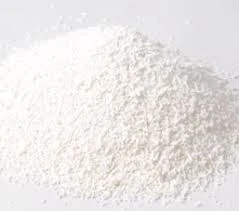
Aspartame Levels Detected in Popular Low-Calorie Beverages and Their Health Implications
The Role of Aspartame in Modern Nutrition
Aspartame has been a point of discussion and debate since its approval as a low-calorie sweetener in the 1980s. Found in a wide array of products, from diet sodas to sugar-free snacks, aspartame offers a sweet taste without the caloric load of traditional sugars. This article explores the composition of aspartame, its uses, and the ongoing discussions surrounding its safety and health implications.
What is Aspartame?
Aspartame is a synthetic sweetener made from two amino acids phenylalanine and aspartic acid. When consumed, it is metabolized in the body to its constituent parts, including methanol, which is further broken down into formaldehyde and formic acid. While this metabolic pathway raises concerns for some, the amounts produced are significantly lower than those found in commonly consumed fruits and vegetables, where these substances also occur naturally.
Uses of Aspartame
The primary use of aspartame is to provide sweetness while minimizing caloric intake. It is commonly found in sugar-free chewing gums, desserts, yogurts, and a variety of beverages. One of the main advantages of aspartame is its extreme sweetness; it is approximately 200 times sweeter than sucrose (table sugar), meaning that only a small amount is needed to achieve the desired level of sweetness. This characteristic makes it particularly attractive for food manufacturers seeking to cater to health-conscious consumers and those managing conditions like diabetes.
aspartame found in

Health Implications
Despite its widespread use, aspartame has not been without controversy. Over the years, various groups have raised concerns about potential health risks associated with its consumption, suggesting links to a range of health issues, including headaches, allergic reactions, and even more severe conditions. However, extensive research, including studies by the U.S. Food and Drug Administration (FDA), the European Food Safety Authority (EFSA), and other health organizations, has consistently found no evidence supporting these claims when aspartame is consumed within established safe limits.
One specific area of concern is its effect on individuals with phenylketonuria (PKU), a rare metabolic disorder where the body cannot effectively process phenylalanine. For individuals with PKU, even small amounts of aspartame can lead to complications, necessitating that they avoid aspartame-containing products entirely.
The Future of Aspartame
As the demand for low-calorie sweeteners continues to grow with rising obesity rates and increasing health awareness, aspartame remains a staple in the food industry. However, consumer preferences are shifting towards natural sweeteners, leading to the emergence of alternatives like stevia and monk fruit extract. While these alternatives are marketed as healthier options, they too come with their own set of considerations and potential health implications that require further examination.
In conclusion, aspartame stands as a significant player in the realm of food additives and sweeteners. Its ability to provide sweetness without calories makes it a valuable tool for many seeking to reduce their sugar intake. Nevertheless, ongoing research and consumer education are crucial to ensure that individuals are making informed choices about the products they consume. As we move forward, balancing the benefits of aspartame with consumer safety and preference will be essential in shaping the future landscape of low-calorie sweeteners.
-
nitrile-rubber-honoring-strict-production-standardsNewsAug.22,2025
-
aspartame-ingredients-honoring-food-safety-valuesNewsAug.22,2025
-
fertilizer-for-balanced-plant-nutritionNewsAug.22,2025
-
cyanide-gold-processing-with-high-purity-additivesNewsAug.22,2025
-
formic-acid-in-textile-dyeing-applicationsNewsAug.22,2025
-
aluminum-hydroxide-gel-in-skincare-productsNewsAug.22,2025
-
Regulatory Compliance for Global Mining Chemicals UseNewsAug.12,2025
Hebei Tenger Chemical Technology Co., Ltd. focuses on the chemical industry and is committed to the export service of chemical raw materials.
-

view more DiethanolisopropanolamineIn the ever-growing field of chemical solutions, diethanolisopropanolamine (DEIPA) stands out as a versatile and important compound. Due to its unique chemical structure and properties, DEIPA is of interest to various industries including construction, personal care, and agriculture. -

view more TriisopropanolamineTriisopropanolamine (TIPA) alkanol amine substance, is a kind of alcohol amine compound with amino and alcohol hydroxyl, and because of its molecules contains both amino and hydroxyl. -

view more Tetramethyl Thiuram DisulfideTetramethyl thiuram disulfide, also known as TMTD, is a white to light-yellow powder with a distinct sulfur-like odor. It is soluble in organic solvents such as benzene, acetone, and ethyl acetate, making it highly versatile for use in different formulations. TMTD is known for its excellent vulcanization acceleration properties, which makes it a key ingredient in the production of rubber products. Additionally, it acts as an effective fungicide and bactericide, making it valuable in agricultural applications. Its high purity and stability ensure consistent performance, making it a preferred choice for manufacturers across various industries.





